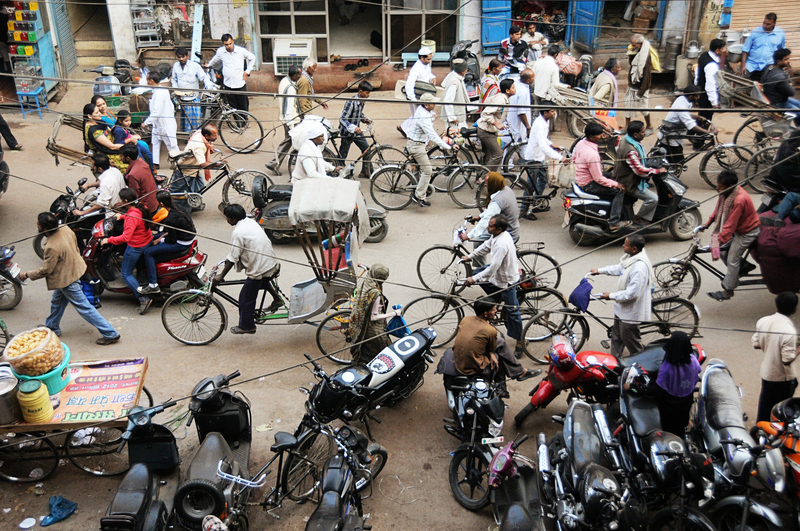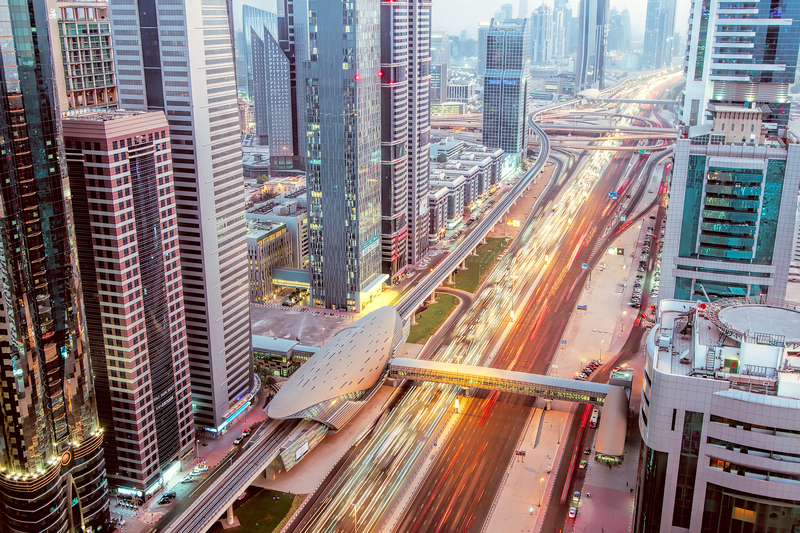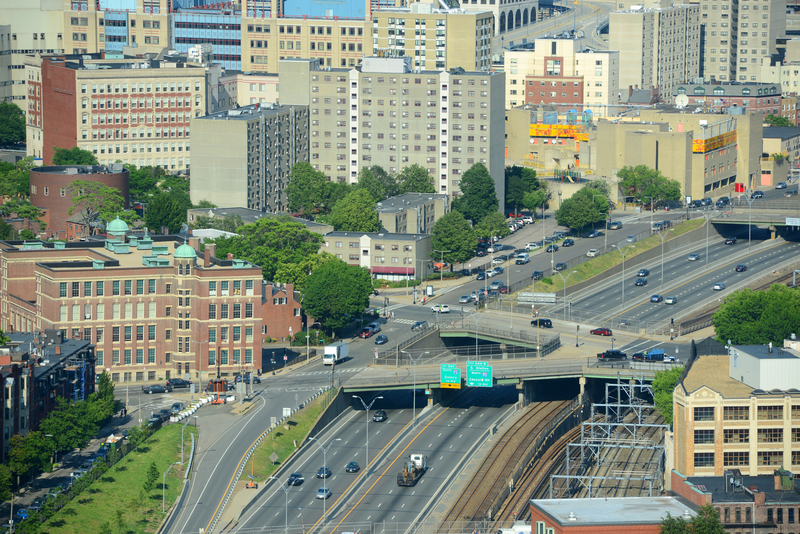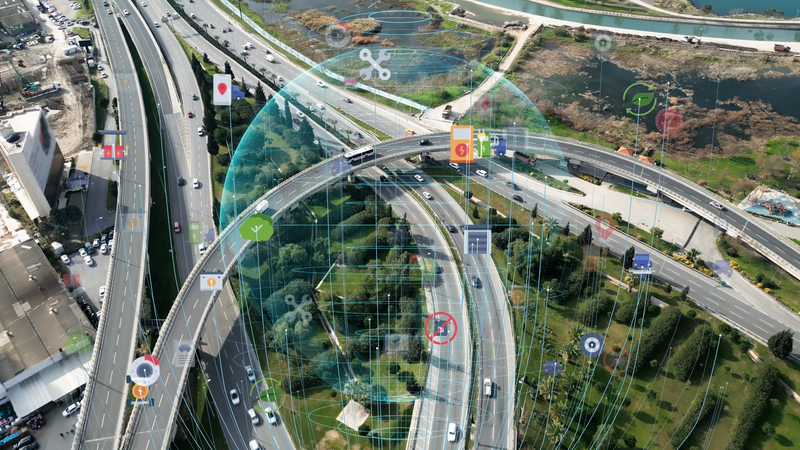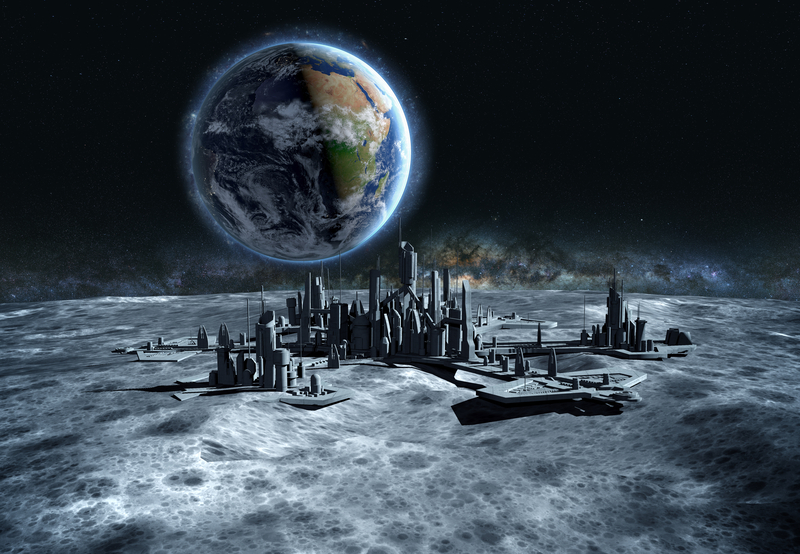
1. The motivation
I am a generalising-specialist in the field of transport innovations and society. I develop theory and conceptualise complex system interactions and then empirically explore them using a variety of methods. In other words, I like to connect the dots. My aim is to develop new perspectives in transport planning that help the scientific, professional, and policy communities address key societal challenges globally, such as sustainability, liveability and societal well-being. Space transport is one of the fields that has recently attracted my attention, motivated by the “unknown ‘unknown’” factors, the systemic nature of the problem, and the potential significant benefits for Earth's transport systems within a climate-crisis context.
Space discovery developments have always intrigued me, although I was not born during the Apollo Programme (1968-1972). However, key space missions like the Challenger (1986), the launch of the Hubble Space Telescope (1990), the Mars Pathfinder (1997) and the International Space Station (1998) captured my interest during my childhood and teenage years. Fast-forward 20 years, after conducting research in urban and transport planning with a focus on transport innovations in several countries around the world, I was pleased to read about the renewed plans of the international space exploration community to expand human presence from low Earth orbit (LEO) to the Moon, Mars and beyond - for curiosity, science, resource, economic, and environmental reasons. But what is the plan for space exploration?
2. The global space exploration roadmap
The International Space Exploration Coordination Group (27 space agencies) has recently published the fourth edition of the shared roadmap for expanding humanity’s presence in the solar system (ISECG, 2024). The space exploration roadmap describes a stepwise vision for robotic-first and human-later space exploration through 2050, starting with LEO (e.g. space stations, space telescopes, satellites), the Moon (sustained lunar presence), Mars (the horizon target for searching for evidence of life, exploring Mars’ surface, interior and atmosphere and gradually establishing human presence in orbit and on the surface) and other solar destinations (robotic missions from Mercury up to the Kuiper Belt).
At the moment, the focus is on opening the second doorway of the space frontier after LEO: the Moon. Three exploration phases have been outlined (ISECG, 2022). First, sending humans and robotic exploration missions to the Moon to prepare subsequent phases (Phase 1: Boots to the Moon); second, further exploring the lunar surface and selecting optimal sites for extended habitation and resource utilisation (Phase 2: Lunar exploration - expanding and building); and third, establishing a sustained, active presence on the Moon over the coming decades and expanding exploration efforts with missions to Mars (Phase 3: Sustained lunar opportunities). Phase 1 is in progress with lunar missions like Chang'E (CNSA, China) and Artemis (Nasa, US), while Phase 2 will follow with the landing of humans and rovers on the Moon before the development of fixed surface habitats in Phase 3 at the end of this decade. Technology development to complete these missions is ongoing. But does it suffice for long-term human space presence?

3. Technology readiness: is it enough for long-term human space presence?
The space exploration roadmap focuses on key existing technologies, as well as critical gaps in technological areas that need to be addressed to realise Moon and Mars missions (i.e. propulsion, landing, and return; autonomous systems; life support and habitability; crew health and performance; communications, positioning, navigation and timing; power; transversal technologies; extravehicular activity [EVA], mobility, and robotics). Scientific research has naturally focused on addressing those technological gaps, with space mobility centring on the development of rover concepts, designs and technologies (e.g. wheels, suspensions, brakes, powertrain, path planning, autonomous decision-making and obstacle avoidance, teleoperation).
“The operation of extra-terrestrial settlements, including transport systems, on the Moon and Mars remains an open, though fundamental, question”
Several countries have developed or are developing such Moon, Mars and asteroid rovers, including Canada (Lunar rover for the Artemis programme), China (Yutu), Europe (Rosalind Franklin rover), Germany (Mascot: Mobile asteroid surface scout), India (Pragyan), Japan (Lunar cruiser), the UAE (Rashid rover), and the US (e.g. Curiosity, Perseverance). However, the organisation and operation of extra-terrestrial settlements, including transport systems, on the Moon and Mars remains an open, though fundamental, question. This question refers to the post-Phase 3 period of the lunar exploration (beyond the 2030s) and is the focus of my recent editorial in Transport Reviews (Milakis, 2024) and my ongoing research. Transport planning in permanent space settlements would be a fundamental dimension of post-Phase 3 space exploration, involving key questions about the travel needs and preferences of people and companies in extra-terrestrial space settlements, the travel modes and transport infrastructures for both passenger and freight transport, the transport operations under severe contextual restrictions, and the implications for safety, the environment, health, wellbeing and social equity of space settlement inhabitants. But how can we start planning for transport in space settlements?
4. A conceptual approach of a transport system for permanent space settlements
The key difference for an extra-terrestrial transport system is the context within which it is developed. In space, transport systems face extreme contextual differences compared to Earth, including exposure to cosmic radiation, reduced gravity, lack of atmosphere, extreme temperature fluctuations, abrasive dust and soil, and unpredictable environmental factors - all of which require careful planning to ensure safety, efficiency and resilience. In my thought experiment, I brought together the key elements of Earth's transport system and the extreme space context to provide insights into transport planning in permanent space settlements. I developed a conceptual model for transport systems in space settlements consisting of three main elements: core, travel and impact (Milakis, 2024). The core element addresses the needs and preferences of people and companies, including transport modes and infrastructure for activities like living and working. The travel element covers travel behaviour such as travel mode choice, frequencies, and distances, as well as traffic patterns (volume, composition, distribution). The impact element focuses on safety, the environment, health, wellbeing and social equity. Key uncertainties like space contextual factors and governance will heavily influence the development and operation of transport systems in space.
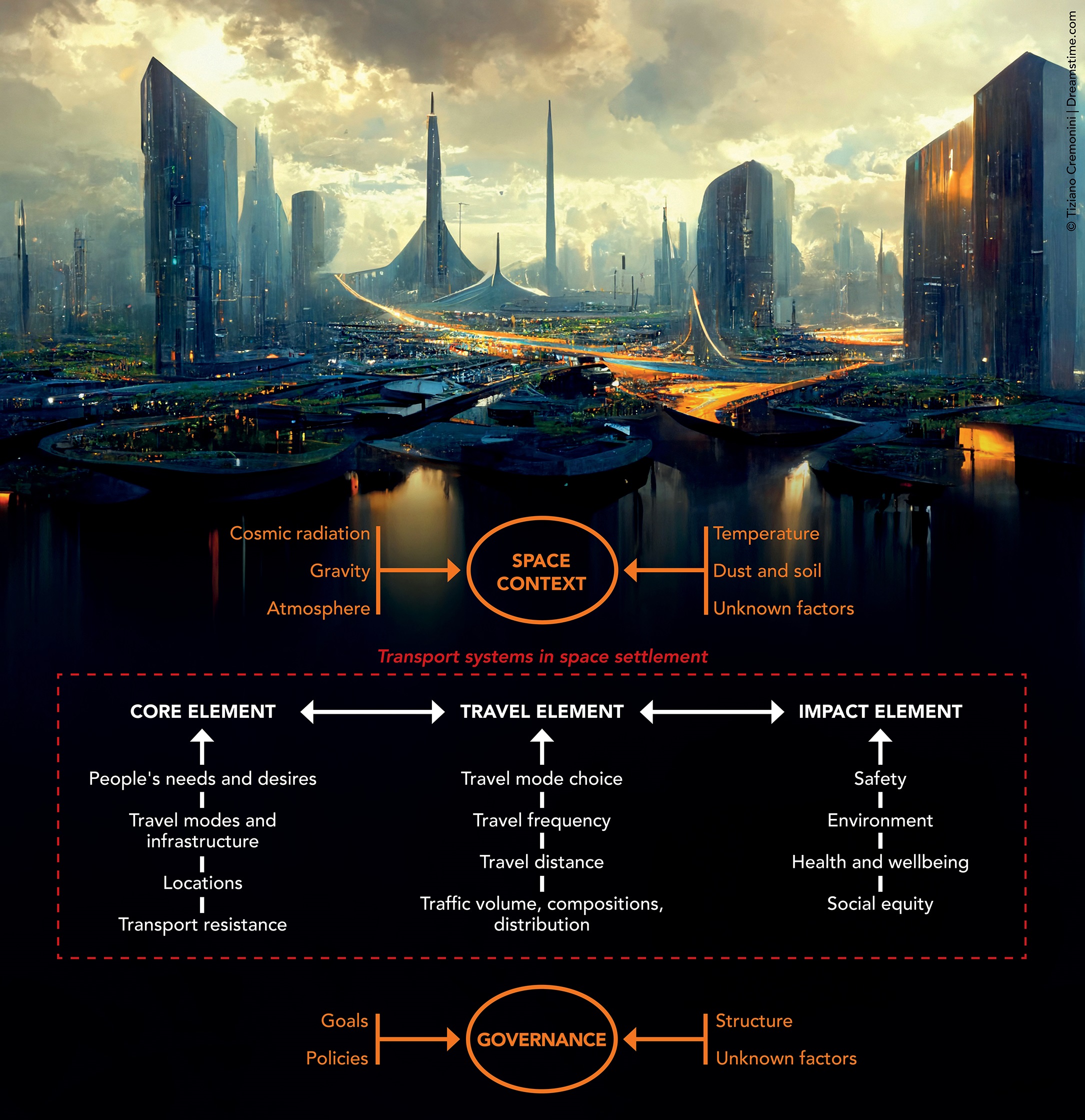
The core element (i.e. needs, infrastructure, location activities, transport resistance) would be heavily influenced by the unique environmental challenges of space. Transport modes and infrastructure must adapt to factors like reduced gravity, which impacts energy needs and vehicle performance. For example, rovers on Mars experience lower traction, suggesting that alternatives like tube-based systems might be more efficient in terms of travel time and energy consumption. Extreme conditions like temperature fluctuations, long nights and dust will require durable materials and advanced energy storage solutions. Space settlements may also be vertically structured to minimise radiation exposure, with transport systems like elevators or vertical railways being developed to support travel within such compact spaces. Travel cost will likely account for not only time and out-of-pocket costs but - more importantly - safety and psychological wellbeing in such a hazardous environment.
“Predictive algorithms and automated systems of rigorous dynamic traffic management in space could further optimise traffic flow, reduce congestion and improve service reliability [on Earth]”
The travel element (i.e. travel mode choice, travel frequency, travel distances, traffic) will likely be shaped by the need for safety and efficiency. Collective and active modes in controlled environments might be more viable and preferable over individual vehicles due to their energy-saving and health-related benefits. Travel within compact settlements will be short, but for longer distances to remote areas, fast tube-based collective transport would be needed to reduce radiation exposure. Transport systems would likely be modular and adaptable, with features like regenerative braking and energy-sharing networks enhancing efficiency. Rigorous coordination of demand, capacity and scheduling would be critical to ensure energy-efficient and safe traffic flow in both horizontal and vertical directions, especially when freight and passenger transport share the same infrastructure.
For the impact element (i.e. safety, environment, health, well-being, social equity), strict safety standards would be critical due to human vulnerability in extra-terrestrial environments. Transport systems would need to minimise resource consumption by designing long-lasting, modular and recyclable vehicles that are easy to maintain. Health and wellbeing would be key aspects, addressing psychological challenges with well-designed interiors and solutions like artificial gravity stations to prevent physiological health problems. Ensuring accessibility and social equity is also important to prevent social isolation in space settlements. Thus, transport systems would need to offer equal and enhanced access for all space residents.
The governance of the transport systems would be an important factor in space settlements. Efficient resource management and sharing, especially for energy and infrastructure, would be critical. Therefore, policies would likely favour energy-efficient collective transport and compact, vertical and horizontal development. Ensuring wellbeing, social equity and equal access to all sectors of the settlement would also be important, due to the harsh space conditions and resource constraints. Given the unpredictability of space environments, governance would need to be flexible and adaptive. But how could research on space transport systems benefit life on Earth?
5. Could space transport planning research help improve transport systems on Earth?
Earth-related benefits from space exploration typically stem from leveraging space technologies for everyday life. Examples range from GPS and navigation to artificial limbs and common infrared thermometers. Transport planning for space settlements could offer a whole new category of knowledge and applications exchange between Earth and extra-terrestrial environments regarding passenger and freight transport systems. The extreme contextual factors in space and the necessary adaptation of transport systems could improve both passenger and freight transport on Earth in terms of vehicle design, resource efficiency and sustainability, resilience, travel experience, traffic control multimodal integration, and transport governance.
“Lessons from space transport systems designed to operate under extreme environmental conditions could help plan for more resilient transport infrastructure in harsh or changing climate conditions on Earth”
Space-designed lightweight, durable materials - along with modular vehicle design for easy maintenance and upgrades - could improve fuel efficiency, reduce emissions and increase vehicle durability if applied to vehicles on Earth. At the same time, more human-centred in-vehicle designs on Earth could be inspired by space transport systems that will carefully account for physiological and psychological wellbeing in confined environments. Moreover, lessons from space transport systems designed to operate under extreme environmental conditions (e.g. temperature fluctuations, dust, reduced gravity) could help plan for more resilient transport infrastructure in harsh or changing climate conditions on Earth.
Advanced coordination of multiple transport modes within compact (horizontal and vertical), resource-constrained space environments (e.g. complex multimodal hubs, shared infrastructure, real-time data coordination) could help design seamless, multimodal transport networks on Earth. Also, the predictive algorithms and automated systems of rigorous dynamic traffic management in space could further optimise traffic flow, reduce congestion and improve service reliability for both urban and freight systems. Indeed, freight transport in space will likely need to share infrastructure with passenger transport in highly-controlled environments, requiring careful coordination to avoid conflicts. This shared-use model can stimulate more efficient integration of urban logistics and passenger transport on Earth. Finally, governance models developed for efficient resource sharing and equitable transport access in space, where a shared effort for survival is necessary, could inform more effective policies for inclusive mobility on Earth.
References
ISECG (2022). Global Exploration Roadmap. Lunar surface exploration scenario update. International Space Exploration Coordination Group
ISECG (2024). Global Exploration Roadmap. International Space Exploration Coordination Group
Milakis, D. (2024). Beyond rockets: transport planning for permanent space settlements. Transport Reviews, 44(1), 1-7
ABOUT THE AUTHOR

Dr. -Ing. Dimitrios Milakis is senior researcher, European Research Coordinator, Institute of Transport Research, German Aerospace Center (DLR)



